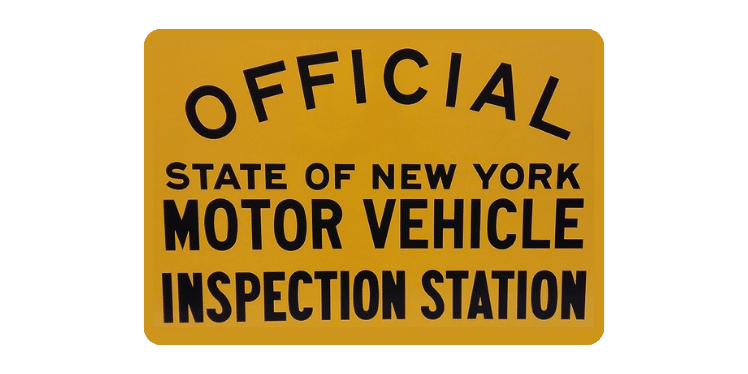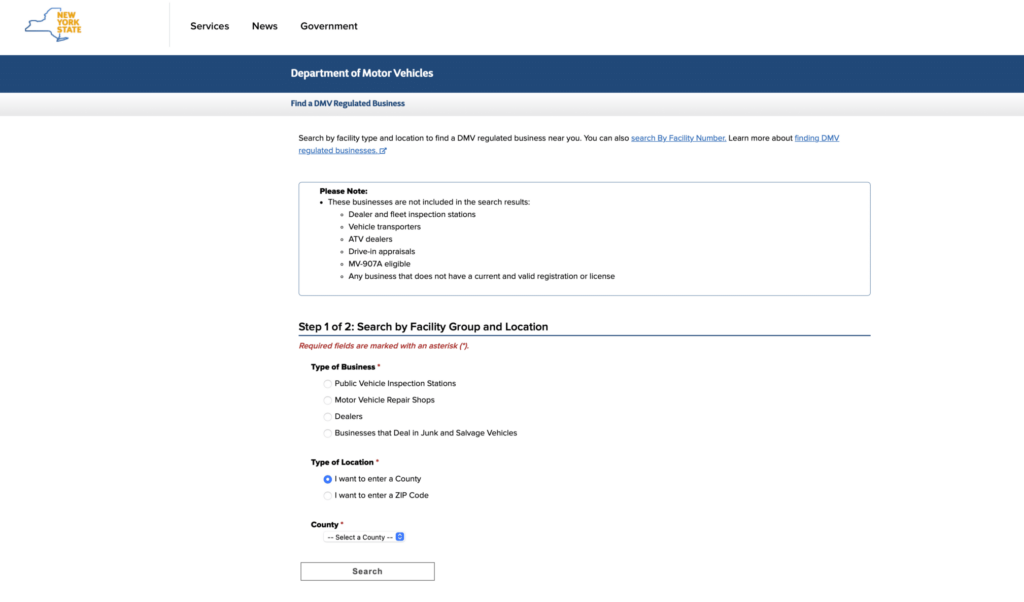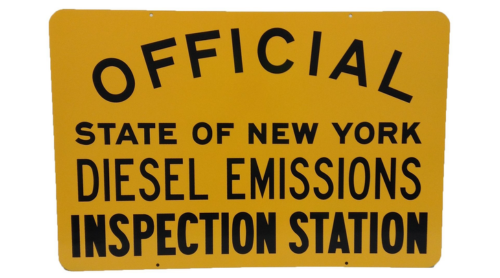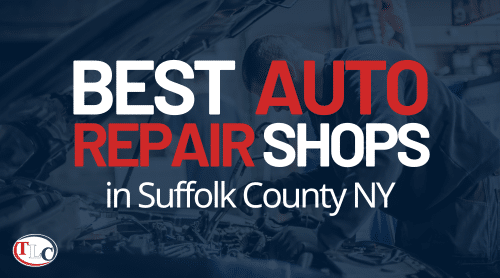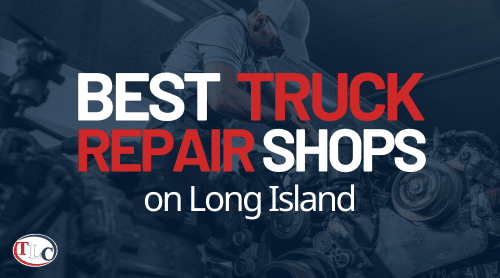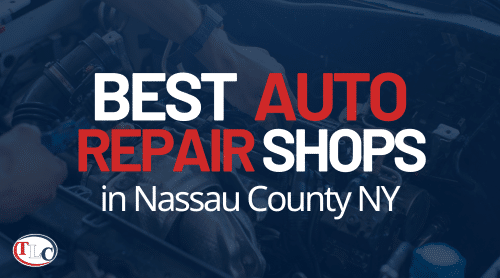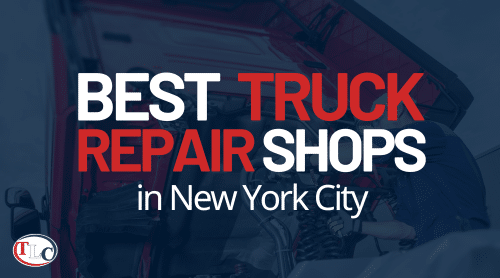Looking to pass your NYS vehicle inspection without a hitch? Ensuring your vehicle meets all safety and emissions standards set by the state is crucial. Through regular maintenance, early issue resolution, and understanding specific inspection criteria, passing your inspection can be straightforward.
This guide helps you with steps, checks, and tips for choosing the right inspection station for a hassle-free experience.
What is a NYS Inspection?
A New York State inspection is a mandatory examination for vehicles to be sure they meet the safety and emissions standards established by the state. This process is critical for:
- Ensuring Road Safety: The safety inspection checks the vital parts of your vehicle, such as brakes, lights, tires, and windshields, to confirm they are in optimal operating condition. This check protects the vehicle’s drivers and all road users by preventing vehicles in poor condition from being driven on public roads.
- Protecting Air Quality: The emissions inspection part of the process ensures that the exhaust emissions of the vehicle meet New York State’s strict standards. This assessment helps minimize the environmental impact of vehicles on air quality by controlling the amount of pollutants they can emit.
How to Prepare for Your NYS Inspection
Before heading to your inspection, a little preparation can go a long way. Here’s how to increase your passing chances:
- Check Your Lights: Ensure all are working, including headlamps, tail lamps, and turn signals.
- Inspect Tires: Look for adequate tread depth and no visible damage.
- Test Your Brakes: They should respond promptly without unusual noises or pulling.
- Review Emission Systems: A check engine light could indicate emission system issues.
Taking these steps can help you avoid common pitfalls that lead to inspection failure.
New York State Inspection Regulations
Understanding the regulations for vehicle inspections in New York State is essential for every vehicle owner:
- Legal Requirements: Annual inspections are required to ensure vehicles meet safety and emissions standards.
- Frequency of Inspections:
- Annual Requirement: Inspect your vehicle every 12 months.
- Upon Ownership Transfer: New inspections are needed when a vehicle changes hands.
- Before Sticker Expiry: Re-inspect before your current sticker expires to avoid penalties.
Inspections are carried out at DMV-licensed stations, which are the only places authorized to issue an NYS inspection sticker.
Your go-to auto repair shop might not be licensed to do this. If you need a New York State Inspection on Long Island, contact TLC Auto & Truck Repair Center.
Source: https://process.dmv.ny.gov/
What Happens If You Fail a Car Inspection?
Failing a car inspection might feel like a setback, but it’s a process designed to keep you and everyone else on the road safe. Here’s what you need to do if your vehicle doesn’t pass:
- Immediate Steps:
- Understand why your vehicle failed. The inspection station will give you a report detailing what needs to be fixed.
- Plan for repairs. You can choose to have the inspection station make the repairs or take your vehicle to another auto repair shop of your choice.
- Re-Inspection Process:
- After repairs are made, you can bring your vehicle back for re-inspection.
- If you return to the same station within 30 days, the re-inspection of the failed components may be free.
- Complete re-inspection ensures your vehicle now meets all safety and emissions standards.
- Consequences of Driving with a Failed Inspection Sticker:
- It’s illegal to drive with a failed inspection sticker. Doing so can lead to fines and even impoundment of your vehicle.
- Continuously ignoring inspection requirements can result in the revocation of your vehicle registration.
- To prevent legal and financial problems, deal with any issues quickly and have your vehicle inspected again promptly.
NYS Inspection Fail List
Understanding what can cause your vehicle to fail a New York State inspection is important for preparation and compliance. Here’s a detailed look at common reasons for inspection failure, starting with the pivotal question: “What will fail a car inspection in NY?”
Brakes
- Worn brake pads or damaged rotors.
- Leaking brake fluid from hoses or the master cylinder.
- Inability to achieve a straight stop without pulling to one side.
Seatbelts
- Malfunctioning retractor mechanism.
- Worn or frayed belts.
- Inadequate anchorage points, particularly for models from specific years (1967 and 1968).
Lights
- Non-functional headlamps, tail lamps, stop lamps, directional signals, backup lights, and hazard warnings.
- Damaged or cloudy light covers that impair light effectiveness.
Windshield and Auto Glass
- Cracks or chips in the driver’s line of sight.
- Wipers that fail to clear the windshield effectively.
- Missing or non-functional rearview mirrors.
Tires
- Tread depth below the legal minimum of 2/32 inch.
- Visible sidewall damage or bulges.
- Incorrect tire size or type for the vehicle.
Emission Control Systems
- Failure to meet state emission standards.
- Malfunctioning sensors or catalytic converters.
- Check engine light that remains on.
Steering and Suspension
- Excessive play in the steering wheel.
- Faulty power steering components.
- Worn suspension parts that affect vehicle handling.
Horn
- Non-operational or not loud enough to be heard from a reasonable distance.
- Malfunctioning switch that makes the horn difficult to operate.
Exhaust System
- Leaks or excessive noise.
- Missing components.
- Modifications that increase emissions.
Fuel System
- Leaks from tanks or hoses.
- Damaged or missing fuel cap.
- Contaminated fuel.
These are the most common issues that could cause a vehicle to fail the inspection. Make sure your vehicle is in good condition before inspection to save time, money, and avoid the hassle of re-inspection.
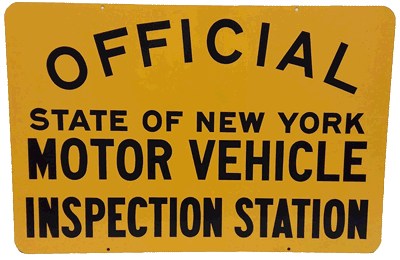
Get A Reliable NYS Inspection
On Long Island
Free Pick-Up & Drop-Off Service.
Schedule Your New York State Inspection Today!
NYS Vehicle Inspection Requirements
Ensuring your vehicle is up to par with New York State’s inspection standards is key to a smooth inspection process. Below, we’ve outlined the crucial checkpoints your vehicle will be evaluated against.
Safety Features:
- Brakes: Must be in optimal working condition, with adequate pad thickness and no fluid leaks.
- Seatbelts: All seatbelts should function correctly, lock securely, and show no signs of fraying or wear.
- Lights: Headlights, taillights, brake lights, turn signals, and reverse lights must work and be properly aligned.
- Windshield and Auto Glass: Should be free of significant cracks or chips, especially in the driver’s line of sight.
- Mirrors: Both rearview and side mirrors must be present, secure, and provide a clear view.
- Steering: Steering should be responsive with no excessive play.
- Suspension: The vehicle’s suspension components should ensure a smooth ride without undue noise or instability.
- Tires: Tread depth must meet the minimum legal requirement, and tires should be free of damage and properly inflated.
- Horn: Must be loud enough to be heard by other motorists and pedestrians.
In the next section, we’ll look at the requirements for emissions.
Vehicle Emission Inspection in New York State
This inspection checks the amount of pollution your vehicle emits into the air. This pollution can impact the environment and the air we breathe. Emission standards vary depending on your vehicle’s type and model year.
Understanding Emission Inspection Requirements
- Every vehicle registered in New York State must pass an emissions test as part of its annual inspection.
- Requirements for newer vehicles are stricter due to advancements in emissions control technology, varying by vehicle type and model year.
Emission Standards
Emission standards are set to minimize the environmental impact of vehicles. These standards dictate the acceptable limits of various pollutants that a vehicle can emit.
- Newer cars, typically less than 2 years old, have modern emission control systems. They may not require emissions testing because they are efficient and meet environmental standards.
- Newer gasoline cars, from 1996 and up, are tested using OBDII to check the emission control system. The test is done using the car’s own monitoring system.
- Older models (cars made before 1995): These cars are tested for emissions by measuring pollutants coming out of the exhaust pipe.
- Diesel vehicles are tested for how much light is blocked by particles in the exhaust, known as opacity. Requirements for vehicle testing depend on weight and age, with heavier and older vehicles typically facing stricter testing standards.
- Heavy-duty Vehicles: Larger, commercial-grade vehicles are subject to emissions testing tailored to their size and use.
Emission Testing Process
The emission testing process evaluates a vehicle’s exhaust to ensure it meets New York State’s stringent air quality standards.
For Cars and Light Trucks
- OBDII Test: Gasoline cars from 1996 onwards are tested using their OBDII system built-in. This test checks the vehicle’s emission control systems are working correctly.
- Older cars, like gasoline models from 1995 or earlier, get tested for emissions by measuring what comes out of the tailpipe.
- Diesel emissions test checks how much smoke comes out of diesel vehicles. Older or heavier models have to meet stricter standards.
Common Reasons for Emission Inspection Failure
Emission inspection failures can occur for several reasons, impacting a vehicle’s ability to operate within environmental standards. Common issues include:
- Broken OBDII System: If your car’s computer has problems, it may not check emissions properly, causing it to fail.
- High Emissions Levels: Vehicles that emit pollutants above the allowable levels for their model year and type will fail.
- Malfunctioning Emission Control Devices: Faulty catalytic converters, oxygen sensors, or EVAP systems are common culprits.
- Check Engine Light: If the check engine light is on, it means there is a problem with the vehicle’s emission system.
Frequently Asked Questions
How much is a NYS vehicle Inspection?
The cost of New York State vehicle inspections can vary depending on factors such as the type of vehicle and the inspection station. For further information on how much it costs to inspect your vehicle, please visit our NYS Inspection Cost Guide. Additionally, it is recommended that you check with a local inspection station or official sources for the most accurate and current pricing details for New York State vehicle inspections.
Inspection Groups And Fee Chart
How long does a NYS inspection take?
A full NYS car inspection can take anywhere from 30 minutes to several hours to complete. The inspection will usually take much less time if there are no significant issues. Factors such as the vehicle’s condition, the complexity of required tests, and the workload at the inspection station can impact the overall duration of the inspection process.
Estimated Time Of A NYS Inspection
- Reviewing documents: up to 15 minutes
- Road test: Up to 30 minutes
- Physical inspection: ~1 hour
- Mechanical & electric inspection: up to 3 hours
Most safety and emission inspections will take around 2 hours. If your vehicle is in perfect condition, it might only take 30 minutes.
What is the NYS failed inspection grace period?
The NYS failed inspection grace period is 10 days from the date of the initial inspection. You can drive your car without getting in trouble to fix it and get it checked again during this time. Remember, the grace period is only for repairs, not for driving legally. Don’t think of it as an extension of your vehicle’s legal status.
What happens if your car fails inspection twice?
If your car fails inspection twice, you must correct all issues before attempting another inspection. New York State law requires that your vehicle pass all inspection criteria to be roadworthy. It’s best to work closely with a trusted mechanic to fix all issues properly and prevent future problems and penalties.
Can you go to another inspection station if you fail one?
Yes, you can go to another inspection station if you fail one. Keep in mind that a re-inspection at a different station may require you to pay the inspection fee again. Always check with the new station to see if they will accept the first inspection or if there are extra fees.
Summary
As we wrap up this comprehensive guide, it’s clear that preparing for and passing the New York State vehicle inspection requires attention to both safety and emissions standards. By focusing on regular maintenance and understanding the inspection process, you can ensure your vehicle not only passes inspection but also contributes to safer roads and cleaner air in New York State.
Key Points to Remember:
- Preparation is Key: Checking your lights, tires, brakes, and emission systems ahead of time can prevent common failures.
- Understand the Requirements: Familiarize yourself with both the safety features and emission standards your vehicle must meet.
- Know the Process: Whether it’s your annual inspection, a transfer of ownership, or you’re nearing your sticker’s expiry, timely inspections are crucial.
- Address Failures Promptly: If you fail, understand why, make necessary repairs, and know your options for re-inspection.
Remember, DMV-licensed stations like TLC Auto & Truck Repair Center are your go-to for both inspections and any repairs your vehicle might need to meet New York State’s stringent standards.

Get A Reliable NYS Inspection
On Long Island
Free Pick-Up & Drop-Off Service.
Schedule Your New York State Inspection Today!


